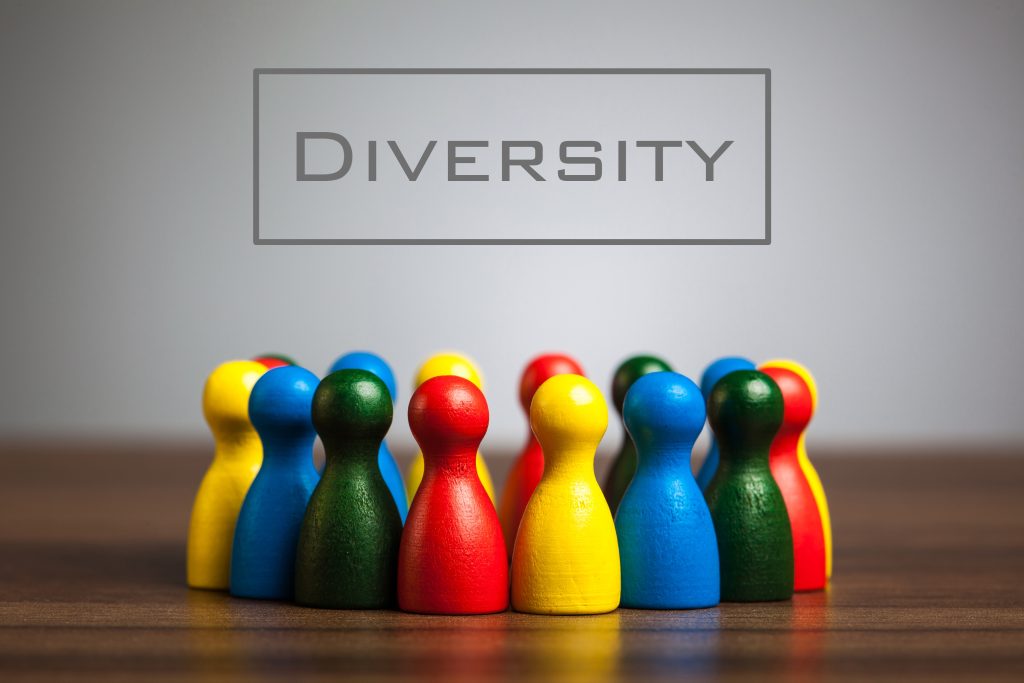You may be wondering if having a diverse workforce has a real impact on the growth of organizations. It does. In fact, several studies have shown this to be true. Here are some data.
- Companies with diverse workforces had a 22% lower turnover rate than companies with less diversity, according to a Forbes report.
- Diverse teams make better decisions 87% of the time than non-diverse teams. This is one of the main conclusions of a study by Harvard Business Review found.
- A study by McKinsey & Company found that companies with gender-diverse executive teams were 25% more likely to have above-average profitability than companies with less gender diversity.
You will surely be interested to know how to build a team based on diversity and inclusion and what strategies work best. Read on, let´s see how companies can tap into a broader range of perspectives and ideas, which can lead to more significant innovation, better decision-making, and improved financial performance.
Understanding the importance of diversity and inclusion in the workplace
Diversity and inclusion are critical factors for any organization that wants to thrive in the modern world. Today’s workforce is diverse, and companies that embrace this diversity are better positioned to succeed.
Creating a culture of diversity and inclusion is not just about checking boxes or meeting quotas; it’s about building a workplace that values everyone’s unique backgrounds, experiences, and perspectives.
Diversity is the range of differences that exist between people, including but not limited to race, ethnicity, gender, age, religion, sexual orientation, and disability.
Inclusion ensures that everyone feels valued, respected, and supported, regardless of their differences. A diverse and inclusive workplace is not only morally and ethically right, but it also has many tangible benefits.
Diversity and inclusion lead to increased creativity, innovation, and problem-solving. When employees come from different backgrounds and bring diverse perspectives, they can challenge each other’s assumptions and see problems from new angles. This diversity of thought can lead to breakthroughs and new ideas that might not have emerged otherwise.
Diversity and inclusion also lead to improved customer relations. Customers come from all walks of life, and having a workforce that reflects the diversity of your customer base can help build stronger relationships.
In addition, companies with diverse and inclusive cultures are more attractive to job seekers, which can lead to a more talented and engaged workforce.

Challenges in creating a diverse and inclusive workplace
Creating a diverse and inclusive culture is not easy, and companies face many challenges. One of the biggest challenges is unconscious bias: the tendency to make decisions based on preconceived notions or stereotypes rather than objective criteria.
For example, a hiring manager might unconsciously prefer candidates who attended the same college or grew up in the same city. This bias can lead to a homogenous workforce lacking diversity of thought and experience.
Another challenge is resistance to change. Some employees may be resistant to diversity and inclusion efforts, either because they need to see the value or because they feel threatened by the changes. Overcoming this resistance requires strong leadership and a commitment to change.
Strategies for creating a culture of diversity and inclusion
Creating a culture of diversity and inclusion requires a multifaceted approach. Here are some strategies that companies can use to build a more diverse and inclusive workplace:
1. Set clear goals and communicate them effectively
To build a diverse and inclusive culture, companies need to set clear goals and communicate them effectively to all employees. These goals should be specific, measurable, and tied to the company’s overall business objectives.
For example, a company might set a goal of increasing the percentage of women in leadership positions by 25% over the next three years. This goal should be communicated clearly to all employees, along with the reasons why it’s important and how it will benefit the company.
2. Train employees on unconscious bias
Unconscious bias training can help employees become aware of their biases and learn how to make more objective decisions. This training can take many forms, from online modules to in-person workshops.
The key is ensuring that all employees are trained and that the training is ongoing. Unconscious bias cannot be eliminated overnight, but with continued education, it can be minimized.
3. Foster open communication and a safe environment
Creating a culture of diversity and inclusion requires open communication and a safe environment where employees feel comfortable sharing their thoughts and ideas. This means creating opportunities for dialogue and feedback and fostering a culture of respect and trust.
Companies can create safe spaces for employees to share their experiences and perspectives, such as employee resource groups or diversity councils. These groups can help employees feel supported and valued and can also provide valuable feedback to the company.

Measuring and tracking progress in diversity and inclusion efforts
Measuring and tracking progress is essential for any diversity and inclusion initiative. With metrics, it’s possible to know if the company is making progress or if changes are having the desired effect.
Metrics should be tied to the goals set at the initiative’s beginning. For example, if the goal was to increase the percentage of women in leadership positions, the company should track the percentage of women in leadership positions over time.
In addition to tracking metrics, companies should also solicit feedback from employees and other stakeholders. Feedback can help identify areas where the company is falling short and provide insights into how to improve.
At this point, using online surveys to collect feedback is a fast and super-effective solution, and having a platform (such as atwork’s) for this purpose is key.
Online surveys offer an effortless and efficient approach to collecting employee viewpoints, and most provide instantaneous feedback. An added benefit is that they require minimal setup and don’t require manual administration, providing a significant advantage.
The crucial aspect is to guarantee that the survey aligns with the company culture and values. It is essential to tailor language, questions, and formats that match the business to ensure that any administered surveys are customized to the organization.
The atwork Suite is a comprehensive platform that empowers you to oversee the entire process of collecting and analyzing employee feedback and tracking implemented actions. It includes various scientifically validated surveys, with the Company Health Check being the most exhaustive diagnostic tool for assessing your organization’s health.
Additionally, the platform features a robust Dashboard that consolidates all employee feedback analyses. You’ll have access to all the information you need regarding the results by simply clicking a button.
One of its most impressive features is its AI capabilities, which saves you valuable time by offering an action plan with recommendations based on the comments collected and analyzed. This ensures that you can implement appropriate changes efficiently and effectively.
The platform allows you to track the long-term impact of any actions you take, offering you an invaluable tool to assess progress and refine strategies about diversity and inclusion over time.
Common mistakes to avoid in diversity and inclusion efforts
Companies make several common mistakes when trying to create a diverse and inclusive workplace. One of the most common mistakes is treating diversity and inclusion as a box to be checked rather than a cultural shift.
Another mistake is relying too heavily on diversity training without addressing the underlying systems and structures perpetuating inequality. For example, a company that only offers flexible work arrangements may need to address other barriers to inclusion that certain groups face.
Failure to engage all employees is another point to take into account. An inclusive workplace culture requires the participation of all employees, not just those who are part of traditionally underrepresented groups. This means that diversity and inclusion efforts should be designed to appeal to a broad range of employees and should not be exclusive to specific groups.
Another one is the failure to measure progress. Measuring progress is essential for assessing the effectiveness of diversity and inclusion efforts. Without this, organizations may not realize that they are not making progress or may miss opportunities for improvement. Examples of metrics that can measure progress include employee retention rates, promotion rates for underrepresented groups, and survey results on inclusion and belonging.
Companies need to take a holistic approach to diversity and inclusion to avoid these mistakes. This means examining all aspects of the company’s culture, policies, and practices and making changes where necessary.
Each organization is unique, and diversity and inclusion initiatives must be tailored to their specific needs. Adopting a one-size-fits-all approach can lead to exclusion and resentment.

The role of leadership in creating a diverse and inclusive workplace
Leadership plays a critical role in creating a diverse and inclusive workplace. Leaders set the tone for the company’s culture and are responsible for ensuring that diversity and inclusion are integrated into all aspects of the business.
A study by Boston Consulting Group found that companies with diverse management teams had an innovation revenue advantage of 19 percentage points compared to companies with below-average diversity.
Leaders should prioritize diversity and inclusion and communicate this priority effectively to all employees. They should also model inclusive behavior and hold themselves and others accountable for creating a culture of respect and inclusion.
- Champion diversity and inclusion: Leaders must demonstrate a personal commitment to diversity and inclusion, making it clear that it is a priority for the organization. This involves advocating for diversity and inclusion initiatives, communicating the business case for diversity, and setting measurable goals for diversity and inclusion.
- Foster an inclusive culture: They should create a culture that values diversity and inclusion, where employees feel respected and valued for their unique backgrounds and experiences. This involves promoting open communication, actively listening to employees, and encouraging diverse perspectives and ideas.
- Build a diverse workforce: Leaders must actively seek out and hire individuals from diverse backgrounds to ensure that the organization reflects the diversity of its community. For example, removing biases in the hiring process, such as using diverse interview panels and implementing programs to attract and retain diverse talent.
- Provide training and development: Training and development opportunities to promote diversity and inclusion, such as unconscious bias training, cultural competence training, and mentoring programs for underrepresented groups.
- Hold themselves and others accountable: Leaders should hold themselves and others responsible for promoting diversity and inclusion, by setting measurable goals, monitoring progress, and providing consequences for noncompliance.
Examples of successful diversity and inclusion initiatives
There are many examples of successful diversity and inclusion initiatives.
- Salesforce, the cloud computing giant, has significantly increased diversity and inclusion in its workforce, including setting specific hiring goals and regularly publishing diversity data. The company also created an Office of Equality to ensure its policies and practices are inclusive and equitable.
- Microsoft has implemented a number of initiatives to promote diversity and inclusion, such as expanding its parental leave policies, creating a Diversity and Inclusion report, and partnering with organizations like the National Center for Women & Information Technology and the Human Rights Campaign.
- Patagonia, the outdoor clothing company, has been recognized for its commitment to diversity and inclusion, including offering on-site childcare, providing equal pay for all employees, and supporting organizations that promote environmental and social justice.
- IBM has been a leader in diversity and inclusion for many years, implementing programs like the Women in Technology initiative, which aims to increase the number of women in technical roles, and the Veterans Employment Initiative, which helps veterans transition to civilian careers.
- Airbnb has made a concerted effort to promote diversity and inclusion in its platform, including implementing an anti-discrimination policy, creating a Diversity and Belonging team, and partnering with organizations like the NAACP and the National Urban League.

Encouraging open communication and fostering a safe environment
Encouraging open communication and promoting a safe environment is critical for creating a diverse and inclusive workplace. Companies can create safe spaces for employees to share their experiences and perspectives, such as employee resource groups or diversity councils.
Companies should also encourage feedback and be open to constructive criticism. Employees should feel comfortable sharing their thoughts and ideas, even if they don’t align with the status quo. This openness can lead to new ideas and perspectives that can benefit the company.
Creating a diverse hiring process
Creating a diverse hiring process is essential for building a diverse and inclusive workforce. Companies should examine their recruiting and hiring practices to identify any biases or barriers that may be preventing diverse candidates from being hired.
Companies should also consider implementing blind resume screening, which removes identifying information from resumes to reduce the impact of unconscious bias. In addition, companies can partner with community organizations to source candidates from underrepresented groups.
The importance of ongoing commitment to diversity and inclusion
Creating a culture of diversity and inclusion is not a one-time event; it’s an ongoing process that requires commitment and dedication. Companies must be willing to examine all aspects of their culture, policies, and practices and make changes where necessary.
Companies that prioritize diversity and inclusion can reap the benefits of increased innovation, productivity, and employee satisfaction, while also mitigating legal and reputational risks.
However, achieving diversity and inclusion requires ongoing commitment from leadership and all employees, and must be approached as an ongoing process rather than a one-time effort.
By valuing and respecting all employees’ unique backgrounds and perspectives, companies can create a truly inclusive workplace culture, allowing all employees to reach their full potential and contribute to the organization’s success.
